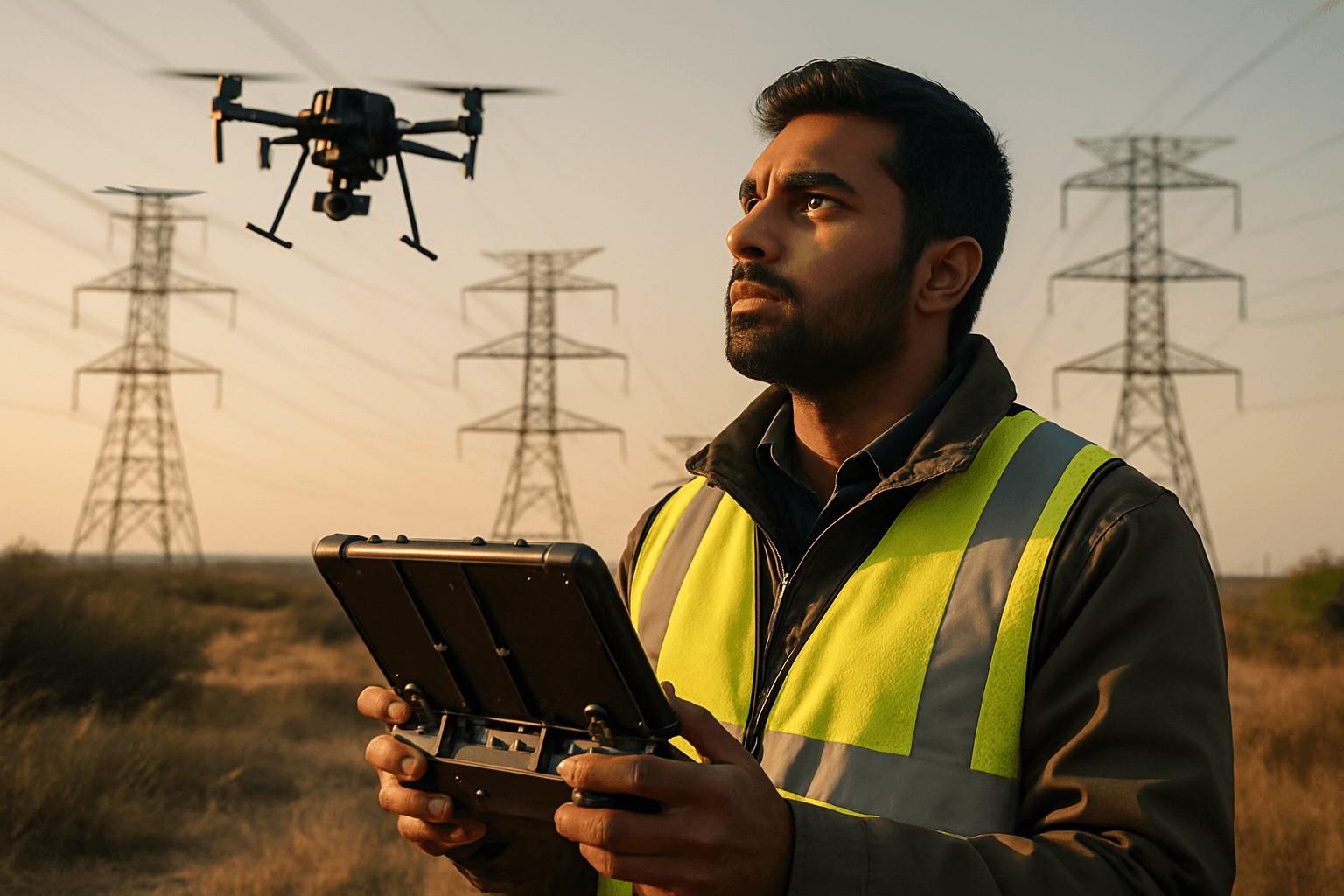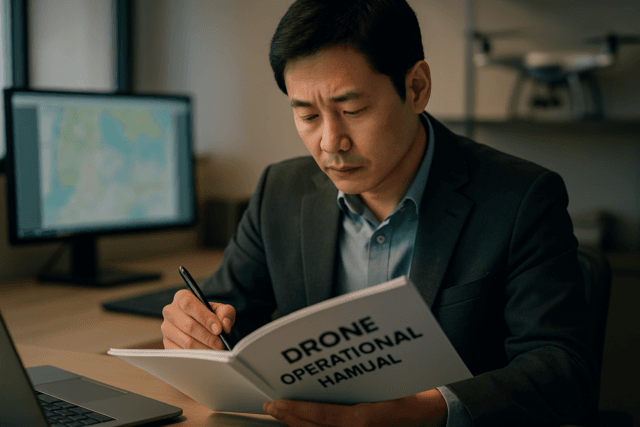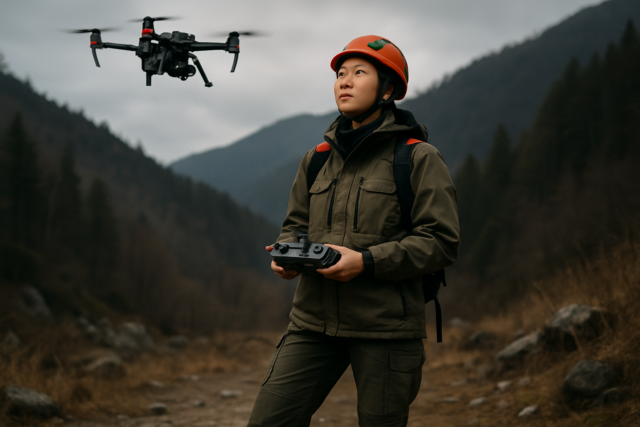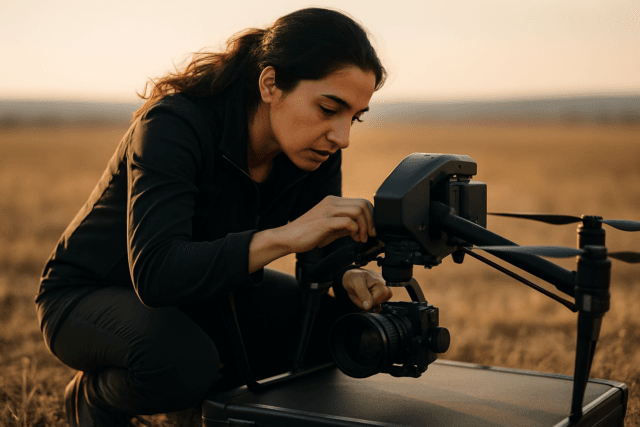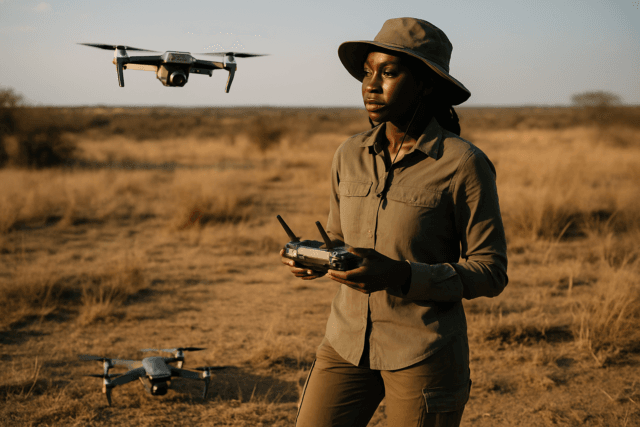Ensuring the uninterrupted flow of electricity is paramount for modern societies, yet the vast networks of power lines are constantly exposed to various threats. From the relentless forces of nature to potential malicious acts, the integrity of power infrastructure is a perpetual concern for utility companies. Traditional inspection methods often fall short in providing the comprehensive, efficient, and safe oversight required. This is where the burgeoning field of Unmanned Aerial Vehicles (UAVs), commonly known as drones, is revolutionizing power line surveillance and security, offering an unparalleled vantage point and advanced capabilities to detect vulnerabilities before they escalate into widespread outages or catastrophic failures.
The Critical Need for Power Line Security
Power lines, the arteries of our electrical grids, span immense distances and traverse diverse, often challenging, terrains. Their exposure makes them susceptible to a myriad of security vulnerabilities that can compromise grid reliability, lead to economic losses, and even pose significant public safety risks. The average power outage in the U.S. lasts almost 6 hours, impacting critical operations like hospitals and emergency services.
Traditional Inspection Limitations
Historically, inspecting power lines has been a labor-intensive, time-consuming, and often dangerous undertaking. Methods have primarily included:
- Manual Visual Inspections: Crews on foot or using bucket trucks would physically examine lines and poles. This is slow, dangerous (with risks of falls and electrocution), and often impossible in remote or inaccessible areas like mountains or dense forests.
- Helicopter Surveys: While faster than ground patrols and able to cover large distances, helicopters are incredibly expensive to operate (costing $280 to $660 per mile) and are limited by adverse weather conditions. They also generate a substantial volume of data that still requires manual analysis, leading to delays.
- Ground-Based Technologies: While some ground-based LiDAR systems exist, their coverage is often limited by terrain and vegetation.
These traditional approaches often introduce subjectivity, are prone to human error, and struggle to provide the detailed, real-time data necessary for proactive maintenance and security.
Drones: A Game-Changer for Power Grid Surveillance
Unmanned Aerial Vehicles (UAVs) have emerged as a transformative solution for power line inspection and security, offering a safer, faster, more cost-effective, and highly accurate alternative to traditional methods. Since the Federal Aviation Administration authorized drones for commercial use in 2015, utility companies have increasingly adopted this technology.
Advantages of Drone-Based Inspections
- Enhanced Safety: Drones eliminate the need for human inspectors to climb hazardous towers or work in close proximity to high-voltage lines, significantly reducing risks of falls and electrocution.
- Increased Efficiency and Speed: Drones can cover vast areas quickly, inspecting power lines at speeds up to 40 mph, far more efficiently than traditional methods. They can collect thousands of high-resolution images and thermal data in a single mission.
- Cost-Effectiveness: Drones drastically cut inspection costs by reducing reliance on expensive helicopters, extensive manual labor, scaffolding, and vehicle patrols.
- Access to Remote and Difficult Terrains: UAVs can easily navigate and inspect power lines in areas that are challenging or impossible for human crews to reach, such as mountains, dense forests, or wetlands.
- Higher Accuracy and Data Quality: Equipped with advanced sensors, drones capture high-resolution images and detailed data, providing a comprehensive and precise assessment of infrastructure conditions. This enables more accurate and thorough inspections.
- Frequent and Proactive Monitoring: The efficiency and lower cost of drones allow for more frequent inspections, enabling utilities to monitor asset health regularly and implement predictive maintenance, preventing unexpected failures and outages.
Detecting Security Vulnerabilities with Drone Technology
Drones equipped with specialized payloads are capable of identifying a wide range of security vulnerabilities and potential threats to power line infrastructure.
- Physical Damage and Structural Integrity: Drones capture detailed visuals (RGB video and hi-res zoom photos) to identify damaged wires, loose connections, broken components, structural deformations, signs of wear and corrosion on metal parts, and cracks in concrete foundations. They can also detect sagging conductors, ensuring lines are within safe operational limits.
- Thermal Anomalies and Overheating Components: Thermal imaging sensors detect hotspots or overheating components, which can indicate electrical faults, inefficient energy transmission, or impending failures. These are often invisible to the naked eye.
- Vegetation Encroachment: Drones efficiently monitor and map vegetation growth near power lines, identifying encroaching trees and branches that can obstruct views, cause outages, or lead to wildfires.
- Insulator Faults and Corona Discharge: Drones can inspect insulators for deterioration caused by electrical, mechanical, and thermal stresses. Advanced UV cameras on UAVs can detect corona discharge, a luminous partial discharge from conductors and insulators, which indicates ionization of the air and can lead to corrosive materials that shorten the lifespan of high-voltage components and cause radio interference.
- Unauthorized Access and Sabotage: While primarily focused on physical integrity, regular drone surveillance can contribute to detecting unusual activity or signs of tampering around remote power infrastructure. Physical attacks like sabotage and vandalism are significant threats to power systems. Guyed towers, for example, are vulnerable to support cables being cut by saboteurs.
Advanced Technologies Powering Drone Inspections
The effectiveness of drone-based power line inspection hinges on the integration of sophisticated sensors and intelligent processing capabilities:
- High-Resolution RGB Cameras: Crucial for detailed visual assessments, these cameras, often 20 megapixels or more, capture intricate details of infrastructure components. Some drones feature up to 30x optical zoom for close-up inspection from a safe distance.
- Thermal Imaging Sensors (Infrared): Essential for detecting temperature anomalies, hot spots, and potential electrical faults invisible to the naked eye. Radiometric thermal sensors provide detailed temperature analysis.
- LiDAR (Light Detection and Ranging) Systems: LiDAR uses laser pulses to create detailed 3D maps and point cloud models of power line infrastructure, enabling accurate detection of anomalies and potential issues, even in densely forested areas.
- Artificial Intelligence (AI) and Machine Learning (ML): AI-driven solutions are transforming how utilities inspect and manage electrical grids. AI algorithms process vast amounts of captured data (images, videos, thermal scans) in real-time or post-flight to:
- Automate fault detection, identifying issues like cracks, corrosion, vegetation encroachment, and structural weaknesses.
- Classify damage types and prioritize defects based on risk levels.
- Enable predictive maintenance by analyzing historical data to anticipate where and when issues are likely to occur.
- Reduce human error and the burden on human analysts.
- Integrate with asset management systems for streamlined workflows and data-driven decision-making.
- Anti-Magnetic Interference Technology: Power lines generate strong electromagnetic fields that can interfere with drone operations. Specialized drones are equipped with advanced technology to resist this interference, ensuring stable flight and accurate navigation.
- Obstacle Avoidance Systems: Advanced drones incorporate forward and downward-looking millimeter-wave radar to detect obstacles up to 240 meters away, enhancing safety, especially in complex environments.
Challenges and the Future Outlook
While offering significant advantages, the widespread adoption of drones for power line inspection also presents challenges. These include navigating strict regulatory frameworks (such as beyond visual line-of-sight operations, though the FAA is investigating this), ensuring cybersecurity of data transmissions, and addressing the skill gap for operating and interpreting AI-powered drone data. Weather conditions like high winds, precipitation, and extreme temperatures can also affect drone performance and data quality, though technology is improving.
The future of drone applications in power grid security is rapidly advancing. We can expect to see:
- Increased Autonomy: Drones will become even more autonomous, with AI-driven navigation and real-time obstacle avoidance, reducing the need for constant human piloting.
- Drone Swarms: AI-driven drone swarms may independently inspect and diagnose entire grids, radically changing response times and long-term asset maintenance.
- Seamless Integration: Enhanced integration between drone data and utility asset management systems will further streamline operations.
- Edge Computing and 5G Connectivity: These technologies will enable real-time processing and faster defect identification directly on the drone.
- Advanced Sensor Fusion: Continued development of multi-spectral, hyperspectral, and radio frequency sensors will provide even more comprehensive data.
In conclusion, aerial inspection of power lines using UAVs equipped with cutting-edge sensor technology and AI-driven analytics is no longer a futuristic concept but a vital practice. It is transforming the efficiency, safety, and accuracy of monitoring critical energy infrastructure, allowing utility companies to proactively identify and address security vulnerabilities, ensure grid reliability, and safeguard public welfare.

